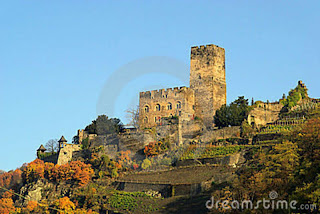Jun 10 2013 10:00am
6 comments
William Shakespeare’s Star Wars is Exactly What You Need For Your Next Geeky Houseparty
 In my experience, geeks are often an incredibly theatrical bunch. It’s hardly any wonder—we love epic stuff. We go for the larger-than-life, we’re prone to dressing up, we enjoy imitating what we find inspiring. As a kid, I found most of my friends in the greenroom of our high school, rehearsing Sondheim musicals and the occasional Martin McDonagh or Nicky Silver play. (Yeah, you read that one right.)
In my experience, geeks are often an incredibly theatrical bunch. It’s hardly any wonder—we love epic stuff. We go for the larger-than-life, we’re prone to dressing up, we enjoy imitating what we find inspiring. As a kid, I found most of my friends in the greenroom of our high school, rehearsing Sondheim musicals and the occasional Martin McDonagh or Nicky Silver play. (Yeah, you read that one right.)So you know what’s a perfect idea? Star Wars as a Shakespeare play. Because as party tricks go, who wouldn’t be into this?
Considering that there are a multitude of Star Wars plays running across the convention circuit on any given year, from musicals to one-man shows to condensed 30-minute trilogies, it’s amazing that Ian Doescher had to point out this gaping chasm to the world with William Shakespeare’s Star Wars. His treatment of Star Wars as a Shakespeare play covers just the first film (that’s first in our chronology, not in theirs,) and encompasses every scene therein.
In true Shakespearean form, there are hilarious asides that make it clear how each character truly feels and what they’re plotting. Observe—
C-3PO: Anon, anon, R2! Where dost thou go?Truer words, you guys. (R2’s lines are written as beeps and squeaks, but his asides are in English. It’s kind of genius.)
O prithee, patience, leave me not alone.
[Aside.] Aye, even though I mock and injure thee,
I’ll surely die if e’er thou leavest me!
There are great illustrations to add character, including all your favorite people sporting Elizabethan additions to their costumes. Well, the Jawas look the same, but Tatooine fashion has that friar kind of vibe anyway. (Jabba’s hat, though. Hutt hats. There are hats for Hutts.) There’s a chorus when the plot needs furthering, and soliloquies galore for all the appropriate moments of resonance, even songs that need melodies! In addition, Doescher sprinkles in fun references for longtime fans that are a treat to pick out; there’s a great shout out to whether Han truly does shoot first, for instance.
What shouldn’t be surprising at all is how easily Star Wars seems to break itself down along Shakespeare’s typical structure, with five acts and emotional exclamations over every betrayal and character archetypes that fit the bill without breaking a sweat. Chats between stormtroopers become whole comedic side scenes in their own right, and knowledge of the prequels inform the ways in which characters monologue about each other where they couldn’t in the film proper.

Flash mob in front of Philadelphia's Museum of Art!
The book has already prompted some celebration, as Shelf Awareness reported that a flash mob appeared on May the 4th at the Philadelphia Museum of Art in its honor! But all I could think while reading the play was what a great late-night party game it would make. Assign roles out to your guests (costumed or not) and spend the next few hours indulging your sci-fi and classics-obsessed friends! Pick a favorite word (I recommend “anon” or “forsooth”) and have everyone drink when it comes up! Just don’t say it was my idea....
Unless you have a great time. Then it totally was.
William Shakespeare’s Star Wars by Ian Doescher is available July 2 from Quirk Books.
William Shakespeare’s Star Wars is Exactly What You Need For Your Next Geeky Houseparty | Tor.com






























 In 1950, it was sold to Bitumen and Oil Refineries Australia Pty Ltd and in 1951 sold to the Miller Steamship Company Ltd and renamed
In 1950, it was sold to Bitumen and Oil Refineries Australia Pty Ltd and in 1951 sold to the Miller Steamship Company Ltd and renamed 


